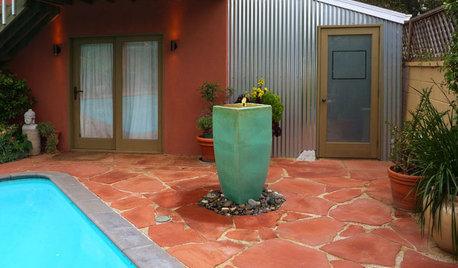Lawn ID please!
oberci
11 years ago
Related Stories

SUMMER GARDENINGHouzz Call: Please Show Us Your Summer Garden!
Share pictures of your home and yard this summer — we’d love to feature them in an upcoming story
Full Story
DECORATING GUIDESPlease Touch: Texture Makes Rooms Spring to Life
Great design stimulates all the senses, including touch. Check out these great uses of texture, then let your fingers do the walking
Full Story
BEFORE AND AFTERSMore Room, Please: 5 Spectacularly Converted Garages
Design — and the desire for more space — turns humble garages into gracious living rooms
Full Story
LAWN ALTERNATIVESStop Fighting the Patchy Lawn!
Here are 3 situations where a garden may be a better idea than more turfgrass
Full Story
BEFORE AND AFTERSSee 6 Yards Transformed by Losing Their Lawns
Wondering whether a turf lawn is the best use of your outdoor space? These homeowners did, and they found creative alternatives
Full Story
FRONT YARD IDEASBefore and After: Front Lawn to Prairie Garden
How they did it: Homeowners create a plan, stick to it and keep the neighbors (and wildlife) in mind
Full Story
LANDSCAPE DESIGNCalifornia Says Goodbye to the Sprawling Ornamental Lawn
New state rules will effectively limit turfgrass to 25 percent of the landscape in most new and renovated yards
Full Story
EARTH DAYThe Case for Losing the Traditional Lawn
Work less, help the environment and foster connections by just saying no to typical turf
Full Story
LANDSCAPE DESIGN15 Great Ideas for a Lawn-Free Yard
End the turf war for good with hardscaping, native grasses and ground covers that save water and are easier to maintain
Full Story
GREAT HOME PROJECTSHow to Replace Your Lawn With a Garden
New project for a new year: Lose the turfgrass for energy savings, wildlife friendliness and lower maintenance
Full StoryMore Discussions







grass1950
tiemco
Related Professionals
Accokeek Landscape Architects & Landscape Designers · Camas Landscape Architects & Landscape Designers · Willowick Landscape Architects & Landscape Designers · Frisco Landscape Contractors · Pelham Landscape Contractors · Athens Landscape Contractors · Goodlettsville Landscape Contractors · Las Vegas Landscape Contractors · Long Beach Landscape Contractors · Lynn Landscape Contractors · Oxnard Landscape Contractors · Rockwall Landscape Contractors · Winter Gardens Landscape Contractors · Redan Swimming Pool Builders · San Juan Capistrano Swimming Pool BuildersoberciOriginal Author
texas_weed
grass1950
mickbo
mickbo
nearandwest
dchall_san_antonio
liyannarose
liyannarose
dchall_san_antonio
jlmart26
dchall_san_antonio
jlmart26
dchall_san_antonio